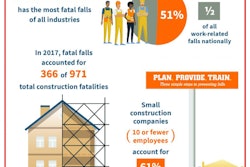
Since Trump has yet to keep his promise of an infrastructure plan, asset owners are tasked with balancing an aging infrastructure with the need to meet contemporary demand all with little to no federal money coming in.
While legislators in 37 states have introduced 185 bills aimed at boosting transportation investment in the first two months of 2019 and the public is starting to recognize the need for infrastructure investment, we are still a long way from meeting the needs of updating our aging roads, bridges and buildings.
In fact, the American Society of Civil Engineers (ASCE) estimates we need to spend over $4.5 trillion by 2025 to improve the state of the country’s roads, bridges, airports and more. So where is all this money going to come from?
Recently, local, state and federal authorities, along with some of the top financiers, consultants, constructors, engineers and technology innovators were brought together for InfraDay Midwest, a one day forum to discuss new opportunities and challenges facing the market. Many of these parties from both the public and private side agreed that public private partnerships (P3s) were becoming the best way to cut through legislative red tape and get projects done in a more timely manner.
What is a P3?
For more than 100 years the public and private sector’s roles in the design, construction, financing, operation and maintenance of public infrastructure were well defined: the public sector owns, operates and maintains public infrastructure; it also finances capital improvements for major renovations or new infrastructure. When it comes to delivering large capital projects, the public sector hires qualified architects and engineers to design the projects and then separately hires the construction contractor that submits the best bid to complete the work.
Recently, trends in public finance, design, construction and asset management have shifted, and in the 1990s, the public sector began experimenting with new forms of private sector involvement in public infrastructure. Some governments passed legislation allowing the government to hire one firm to design and construct a project. Done correctly, this improved schedule and budget performance without sacrificing quality. And on some projects, the public would enter into a long-term arrangement for a private company to design, construct, finance, operate and maintain a public asset.
Highway and other P3 agreements may take several forms and they are designed to shield taxpayers from various risks, including delayed completion, cost overruns and regulatory compliance, by transferring those risks to the private entity.
Should Your Project Consider a P3?
In lieu of a full infrastructure package, the White House suggests using private investments to fund most of its proposed spending package which means contractors should start familiarizing themselves with what it will mean to work on these projects.
For contractors, P3s open up a whole new realm of business. They can be a source of new business when brought into a project by a developer or concessionaire. If contractors enter a P3 alone as concessionaires or developers, they get even bigger roles in the design, construction, and operation of the public assets. Contractors also get long term revenue from operating and maintaining the asset. The other attractive aspect for contractors is the opportunity to share some risk with the public entity. This can open up new project types for contractors who want to diversify their businesses.
But of course, there are cautions for contractors and others on the private side of the equation. Chief among them is enthusiasm causing higher than realistic revenue estimates. If the estimated revenue doesn’t materialize, the contractor ends up waiting longer to recoup investment money.Which is why P3's can seem unattractive to both contractors and DOTs alike.
"When things go wrong on a P3 project, even if the DOT has nothing to do with what's happening, they are going to get the blame," Joe McGuiness, commissioner at Indiana DOT. "If contractors are walking out on a P3 because they're not getting paid and projects are stalled, the public is always going to blame the DOT and not the private entity because they aren't aware of the full situation. So in that way, the public sector is always going to be involved in some way in a P3 and that's what can make them seem unattractive."
Still, these type of projects aren't likely to go anywhere. In fact, Ohio just completed a $634.3 million, 16-mile long, four lane highway project in just over three years with the help of a P3 structure.
"We are seeing P3 projects delivered on time or early even," Sam Beydoun, bureau chief, innovative project delivery at the Illinois Department of Transportation (IDOT) says. "There are incentives to come in ahead of schedule. It gives the developer more revenue and it makes the public entity look good as well. The public sector is starting to understand that these projects can be done and are being done successfully."
What's your experience with P3's? Let me know at [email protected]




















